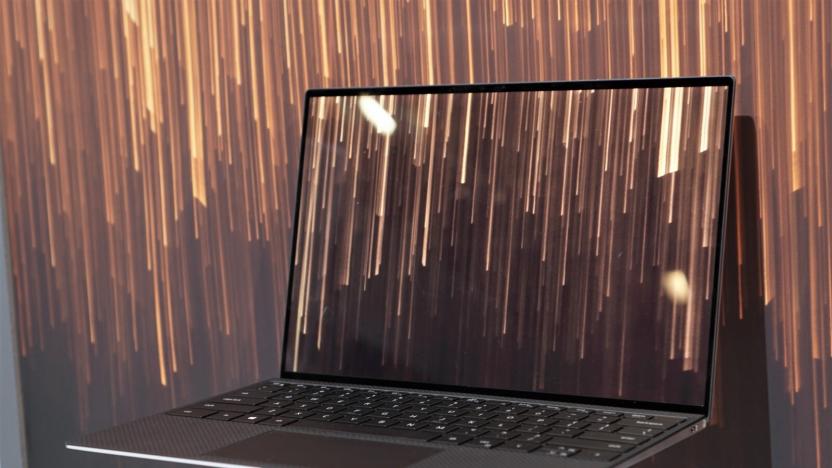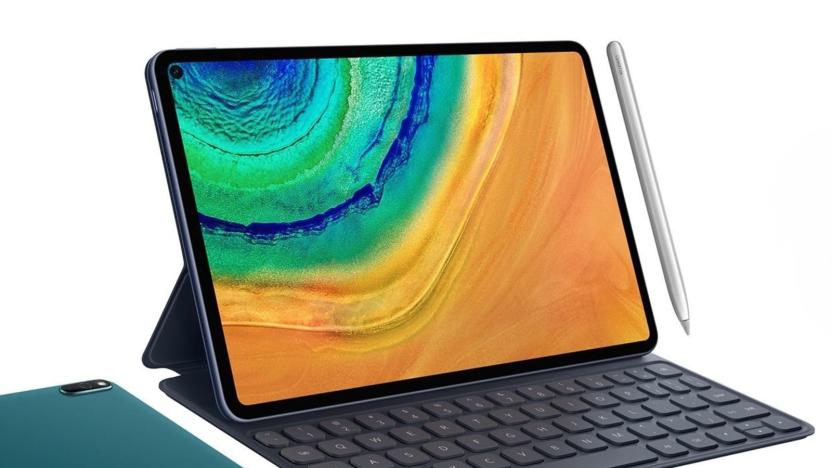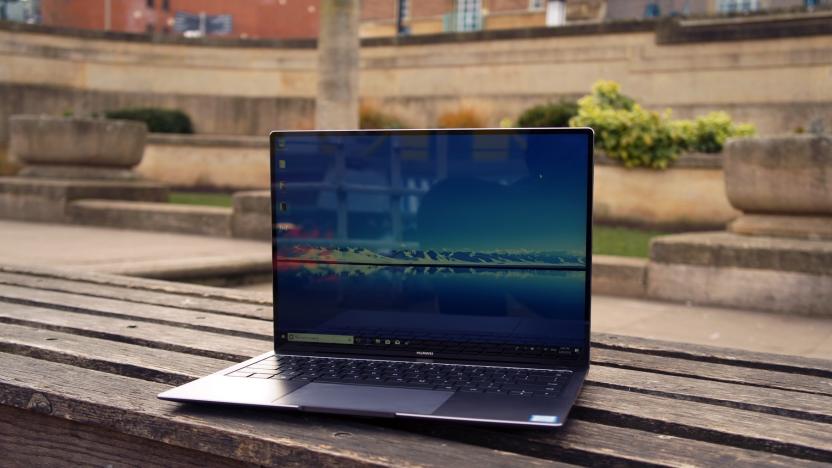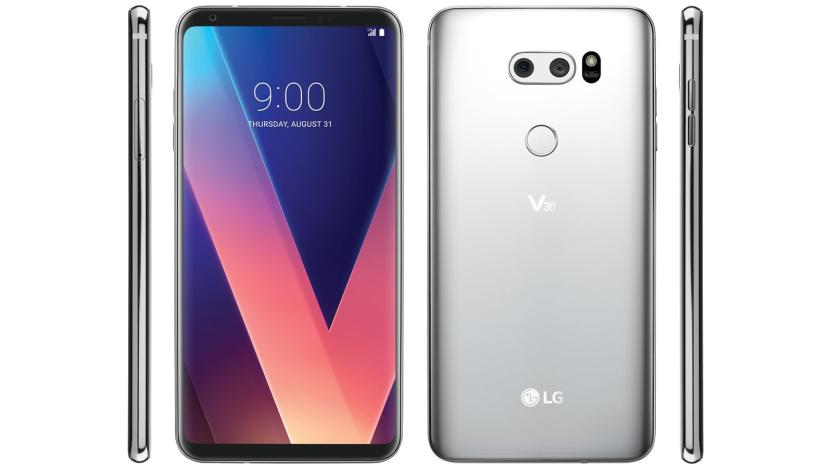bezels
Latest

Why the tech world is waging war on bezels
Our screens have always been defined, at least in part, by their frames. Early TVs had tiny 10-inch screens, housed in enormous cases that looked more like furniture than anything you'd recognize as a modern television. But those borders slowly disappeared over time as CRT sets got smaller and flat panels eventually took over. Today, the tech industry is practically waging a war against bezels. The less border around your screens, the better -- every millimeter separating the display and the real world is an affront to good design.

Huawei's answer to the iPad Pro is the 10.8-inch MatePad Pro
Huawei has unveiled the 10.8-inch MatePad Pro, an iPad Pro-like tablet that we saw earlier via a leak. While it does bear a strong resemblance to Apple's 11-inch iPad Pro, the MatePro has even slimmer 4.9mm bezels made possible by an 8-megapixel hole-punch front camera, according to Engadget Chinese. It's also got a slightly higher-resolution 2,560 x 1,600 display that can output a very bright 540 nits while supporting the DCI-P3 color gamut.

Huawei MateBook X Pro review: A polished yet quirky laptop
Laptops are exercises in compromise, with companies sacrificing what they deem to be unnecessary features on the twin altars of portability and longevity. The decisions on what to keep and what to ditch will ultimately be how the hardware is judged in the real world. Huawei's fourth traditional laptop, the MateBook X Pro, manages to avoid most of the pitfalls around cramming decent hardware in a slender, good-looking body. In fact, it might even be good enough to make laptop buyers think twice about simply running back to the usual cluster of brands.

LG V30 leak shows a refined, almost bezel-free phone
We already knew that LG's incoming V30 smartphone would have one of the best cameras on the market, face and voice unlocking, a 6-inch, 18:9 OLED screen and high-end specs. Now we can see the exact design, thanks to a new image from leaking champ Evan Blass. The phone looks frankly quite handsome, with a near-bezel-free front like the Galaxy S8. Unlike that model, though, it has better rear layout, placing the fingerprint sensor below, not beside the camera. The camera is also better integrated, rather than sticking out like a lump as it does on the V20.

Atmel's XSense promises curvy touchscreens that'll ruin your shirt line (video)
Touchscreen gurus Atmel may not be the most famous name around, but you'll find its gear inside devices like the Galaxy Note and the Galaxy Tab. Now it has pulled the dust-sheets from the latest innovation to emerge from its Californian headquarters: XSense. It's a flexible, super-thin, film-based touch sensor that can be curved and contorted any which way you choose while retaining accuracy. It'll also enable smartphone makers to create "edgeless" touchscreens without bezels, or have them cascade around the sides of the device. Now all we have to do is wonder if we really want a notably concave phone jabbing into our thighs, which you can ponder while you watch the concept video we've got for you after the break.

3M touts capacitive touchscreens with tiny bezels, 10x faster responsiveness
Add another one to the (short) list of obscure things that slipped our net at CES. 3M, a company concerned with the materials and components that go into your delicious new gadgets, spent its time in Vegas this month discussing a new way for building capacitive touchscreen panels. By employing silver as its conducting material, 3M says it has made it possible to shrink the circuits at the edge of a touch panel by a whole order of magnitude, resulting in finger-friendly screens unhampered by bulky bezels. Additionally, due to silver's high conductivity, response times have been shown to dip down as low as 6ms, which is ten times speedier than the currently used Indium Tin Oxide stuff. It's arguable that neither advancement is revolutionary today, as bezels serve a purpose in providing a gripping surface for slate devices and touch responsiveness is currently constrained by software lag more than hardware capabilities, but 3M sure looks to have a nice building block for the future. The future being 2012, according to the company's estimates.

Runco's WindowWall gives you the $100,000 view you always wanted (eyes-on)
You see them, as soon as you set eyes on the gigantic, nine-panel screen. Those black lines are plainly visible. But the 46-inch Samsung panels in Runco's WindowWall have 7.33mm bezels that almost disappear from ten feet away, and when we first walked in, we actually thought they were part of the image. In a nutshell, WindowWall is a modular display system that turns entire walls into displays capable of rendering giant images across many screens, or display different media -- say, Doctor Who, LOST, FlashForward, V, Castle, 24, a couple computer screens and an episode of Firefly for good measure -- on each individual one. Making the system work in sync requires quite a bit of hardware, including a power supply unit and display controller unit for every four 1366 x 768 panels used, not to mention an upscaling box and a seriously sturdy stand (sorry, Humanscale) to hold up all that glass. The company boasts the whole system is scalable, meaning you can make it work with as few as four or as many as twenty panels and still run the entire system as a single screen at its full, gigantic native resolution. We weren't able to see these nine pumping pixels at 4098 x 2304, unfortunately, as the only content on hand was 1080p, but the footage did seem to be well synced across all nine screens. Of course, with a system like this the catch is cost -- for the nine panels, frame, reels of CAT cable and veritable server rack required to run this particular WindowWall, Runco said we should expect to pay a heartstopping $100,000. Droolworthy, to be sure, but too rich for our blood. Perhaps if the whole neighborhood chipped in, right before Super Bowl? %Gallery-89982%

Purported pics of next-gen iPhone front face surface
iResQ, the iPhone/iPod repair site, has posted pics of what they claim is the front faceplate of the next-gen iPhone. Two things about this piece of hardware are particularly interesting. First, the part is approximately 1/4 of an inch taller than the iPhone 3GS, indicative of a slightly taller form factor for the next-gen iPhone. Second, there's a small, reflective strip directly above the hole for the phone speaker. iResQ believes this is likely to be the new location for the iPhone's proximity sensor rather than an indication of any new hardware; however, moving the proximity sensor to a new location and increasing the overall length of the device could still point to a front-facing camera or other new hardware on the next-gen iPhone. digg_url = 'http://digg.com/apple/Purported_Pics_of_Next_Gen_iPhone_Front_Face_Surface'; It's worth mentioning the possibility that these "iPhone" parts aren't legitimate. iResQ hasn't revealed its source for the part, and purported iPhone bezels leaked in 2009 turned out to be parts for a completely different device. The backside of the supposed next-gen iPhone's face is missing quite a few parts present on the iPhone 3G and iPhone 3GS, which either means the part iResQ received was incomplete, the next-gen iPhone has had its internal hardware shifted around, or the part is fake. So case manufacturers, don't throw out your old blueprints just yet. Unfortunately, it's likely we won't find out whether these are legit or not until June/July of this year; despite rumors of an iPhone update in April, the most likely date for the next-gen iPhone's release is early summer. [Via MacRumors]



